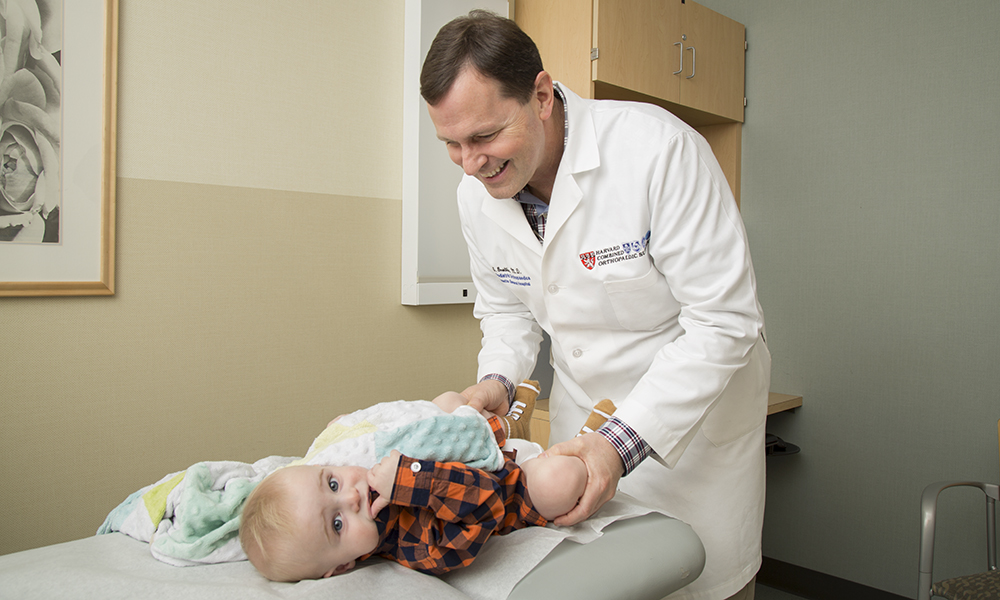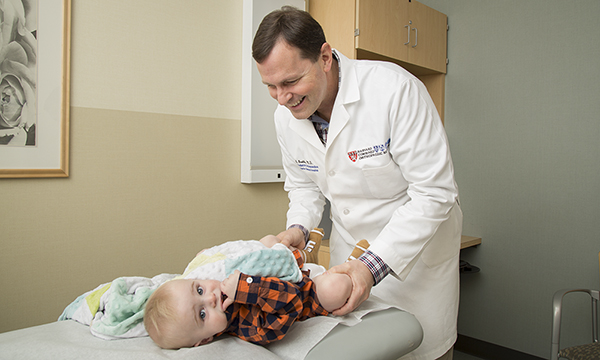Children's Orthopaedics: Conditions & Treatments


Contact Information
Children's Orthopaedics
55 Fruit Street
Yawkey Center for Outpatient Care, Suite 3E
Boston,
MA
02114
Phone: 617-726-8523
Fax: 617-724-0551
Tethering: 617-SCOLI-50
In addition to the Mass General campus in Boston, members of our children's orthopaedics team see patients in these other locations:
Orthopaedics at Mass General Waltham
52 Second Avenue
First Floor, Suite 1150
Waltham, MA 02451
BWH/Mass General Health Care Center
20 Patriot Place
Foxborough, MA 02035
Mass General/North Shore Center for Outpatient Care
102-104 Endicott Street
Lower Level 00
Danvers, MA 01923
Newton-Wellesley Hospital
978 Worcester Street (Route 9)
Newton, MA 02482
Ankle Injuries (Ankle Sprains)
The most commonly sprained or strained joint is the ankle. Approximately 1 million ankle injuries occur each year, and 85% of them are sprains. Ankle sprains can occur during competitive sports or during routine daily activities (walking).
Anterior Vertebral Tethering (AVT)
Anterior vertebral tethering, also known as vertebral body tethering (VBT) or, simply, tethering, is a treatment option for patients with severe, progressive scoliosis who are contemplating surgery, but wish to correct their scoliosis without sacrificing growth, motion or function of the spine.
Clubfoot
Clubfoot, also known as talipes equinovarus, is a congenital deformity of the foot that occurs in about 1 in 1,000 births in the United States. The affected foot tends to be smaller than normal, with the heel pointing downward and the forefoot turning inward.
Common Sports Injuries: Sprains and Strains
The majority of sports injuries are a result of minor trauma to muscles, ligaments and/or tendons. These injuries are often recognized by the onset of immediate localized swelling, pain and/or discoloration. The three most common injuries are contusions (bruises), sprains and strains.
Developmental Dysplasia of the Hip (DDH)
Developmental dysplasia of the hip is an abnormal formation of the hip joint in which the ball at the top of the thighbone (femoral head) is not stable in the socket (acetabulum). The hip is a ball and socket joint, and dysplasia can refer to a hip that is subluxatable (unstable if stressed), dislocatable (can come out of socket under stress) and currently dislocated.
Developmental Milestones for Infants (PDF)
Your baby will make enormous gains in development during the very important first year. In fact, if your baby is like the average baby, he or she will nearly triple in birth weight and grow 10 inches in the first year.
Fractures
The simple definition of a fracture is a partial or complete break in the bone. Fractures and breaks are the same thing. Fractures can be classified in many different ways depending on the type and position of the break in the bone. Most fractures in children can be treated with closed reduction and casting.
In-Toeing Gait in Children
An in-toeing gait is very common in children, and is a frequent complaint of many parents. In fact, an in-toeing gait (pigeon-toed) is the most common rotational deformity seen in pediatric orthopaedics. In the overwhelming majority of patients, the in-toeing will correct with growth over time.
Knee Arthroscopic Surgery
Arthroscopy is a surgical procedure that orthopaedic surgeons use to visualize, diagnose, and treat problems inside of a joint. During the knee arthroscopy, the surgeon will make two to three tiny incisions to insert the pencil-sized instruments.
Knee Injuries (ACL Injuries)
A knee sprain is a stretch, tear or complete rupture of one or more of the knee ligaments. Knee ligament injuries are particularly common in sports that involve tackling (football) and/or twisting (basketball). Knee sprains are not as common in children because the ligaments are stronger than the epiphyseal plates (growth plates).
Legg Calve Perthes Disease
Legg Calve Perthes disease (LCPD)—also known as ischemic (avascular) necrosis of the hip—is a condition characterized by a temporary loss of blood supply to the femoral head (top of the femur).
MRI Book for Children (PDF)
Download a book for children who will have a MRI performed. The book is written and illustrated by children.
Operation Day Book (PDF)
A lot of kids feel scared or nervous about going to the hospital. The hospital can seem like a big place where they see lots of new faces, people wearing special clothes, equipment and machines. Some children feel better when they know what is going to happen, what will hurt, and most of all, when they can go home! This book tells you about those things.
Role of Bracing in the Treatment of Idiopathic Scoliosis
The vast majority of patients that are identified as having scoliotic curves require no treatment other than regular check-ups so that their curves can be measured and monitored. Generally, patients are followed every six months until growth is complete. The overall goal of treatment is to prevent the curve from worsening over time.
Scoliosis
Scoliosis is defined as a lateral curvature of the spine with rotation of the vertebrae about the vertical axis. Scoliosis can occur in either the upper back (thoracic), lower back (lumbar), or rarely, in the neck (cervical). Scoliosis is the most common spinal deformity affecting adolescents 10-16 years of age.
Slipped Capital Femoral Epiphysis (SCFE)
Slipped capital femoral epiphysis (SCFE) is a condition of the hip that usually affects adolescents, in which the epiphysis (growth plate) of the femur (thighbone) becomes separated from the rest of the bone. The epiphysis or growth plate is located at the top of the femur, and the femoral head will usually slip backward and inward in SCFE.
Spica Casts
A spica cast is most often needed in infants with developmental hip dysplasia (DDH) and in infants/young children (
Spinal Surgery
This guide is designed to help answer many of these common questions and concerns.
Spondylosis & Spondylolisthesis of the Lumbar Spine
Spondylolysis and spondylolisthesis are the most common causes of structural back pain in children and adolescents. Spondylolysis is classified as dysplasic (congenital), isthmic (stress fracture), degenerative or traumatic. A spondylolysis in a child or adolescent most commonly results from a defect or stress fracture in the pars interarticularis of the vertebra.
Supracondylar Elbow Fractures
A supracondylar humerus (SCH) fracture is the most common type of elbow fracture in children. This fracture commonly occurs after a fall on an outstretched arm. It occurs at the bottom part of the humerus bone (Fig 1A &B). This type of elbow fracture is most common in children between the ages of two to eight years.
Contact Children's Orthopaedics
Have questions about any of these conditions & treatments? Get in touch.
